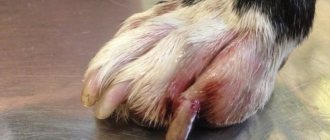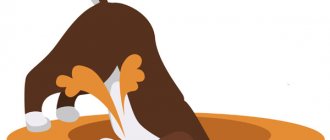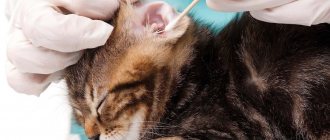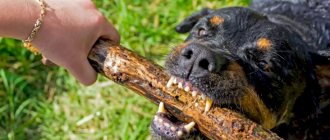When you see a shaking dog, what is the first thing that comes to your mind? He's probably cold, right? However, there are many different reasons why your Yorkie is shaking or trembling. In some cases this is completely normal, but in others you need to act immediately!
In this article, we'll discuss why your Yorkie trembles and what you can do to help your little one. This phenomenon is often described as an episode where your dog completely shakes his body, this phenomenon can last from a few minutes to a few seconds and disappears when your Yorkie calms down or is treated by a veterinarian.
York is cold
The main reason for the Yorkies shaking could be the cold. Yorkshire Terriers have no undercoat. There is only a thin, silky, steel-blue coat, and no furry, wool-like protection underneath. This is good because it prevents shedding and Yorkies are not likely to cause allergies. However, this can cause trouble for your Yorkshire Terrier. The lack of undercoat means that Yorkies often get cold.
Keep in mind that your Yorkie may be cold even when you don't expect it and may need a sweater or blanket. If it's raining outside, if your Yorkie gets wet, especially after a bath, let your dog dry off with a warm towel and then cover him with a blanket. Make sure you have a place in your home where your Yorkie can stay warm.
© shutterstock
Heatstroke
Heat and high air temperatures can cause your dog to shiver and pant with his tongue hanging out. There are no strong reasons for concern if the dog has drinking water and the opportunity to hide in the shade. For dogs with long hair or fluffy coats, you can lay out a wet towel and wet it periodically. In addition, it is recommended to cut such animals for the summer to prevent heat stroke.
You should contact a specialist if your dog becomes lethargic, does not respond to stimuli, and does not touch water. In this case, it is advisable to wrap it in a cool, wet cloth and take it to the clinic as quickly as possible.
Yorkies are emotional
Sometimes it gets a little too emotional for these little pups... If you come home after a long day, the rush of feeling, love and happiness can be so overwhelming that your Yorkie will be shaking. Generally speaking, any happiness can cause shaking - whether you've given your Yorkie his favorite food, a new toy, etc. It depends on your dog's personality and what makes him happy. There's not much you can do other than give your Yorkie love, attention and warm petting to take a break from the rush of feelings.
In dangerous situations, Yorkies will be afraid. Even if you are scared or acting strange, dogs can sense it. While these terriers are indeed protective, competitive, and love to show off, there are situations that frustrate them. If they are attacked or put into unknown situations, they may become afraid. First, you must assess the situation. Is there really a danger? If not, try showing your Yorkie that everything is okay.
Play together, get into a situation that scares Yorkies, show off your energy and happiness. If you can't identify a scary situation, try to make your Yorkie comfortable. Give them love and comfort. Keep them occupied with things they enjoy, things that make them happy and playful. If there is a real problem, get the dog out of it. If your Yorkie is afraid of other dogs or people, try socializing together.
Prevention of illness
Compliance with the rules and regulations for keeping him will help prevent the development of such a pathology in your four-legged friend. For example, lung diseases, as a rule, arise due to an infectious lesion of the body and it does not matter whether it is a direct pathology or the result of a complication of another ailment.
Therefore, protecting your pet from infectious agents is the main principle of preventing respiratory diseases. Therefore, it is always important: to adhere to regular examination of the pet, both by the owner himself (identifying various changes), and clinically, which will determine the pathology if something happens; at the slightest suspicion, perform an analysis for infectious lesions;
- do not refuse preventive vaccinations against diseases common in the region;
- Once a quarter, and in the summer much more often, treat against helminths.
Creating optimal conditions for keeping a pet is considered equally important. After all, inflammation of the respiratory system more often occurs in dogs that are kept in drafts, in cold, damp rooms. In this case, in the fall, especially their guard breeds, begin to cough heavily.
Spring is no less dangerous for animals, when allergic reactions can worsen against the background of plant pollen or poplar fluff. So if rapid breathing occurs in dogs, the causes should be looked for immediately and try to eliminate them. But when the owner himself cannot solve the problem, there is a reason to immediately seek veterinary help. It is important to always remember that there is no serious canine pathology that causes wheezing that can be treated at home.
Dog under stress
Although they are true terriers at heart, Yorkies can sometimes be so sensitive. If they are in a stressful situation for too long, you may see them shaking. If they have been playing and running too intensely, or if they have had too strenuous physical activity, their bodies may begin to shake because the muscles are extremely activated and used. This is the body's way of protecting itself.
Additionally, if they've missed you too much, they may be stressed because they're alone or even unsure if you'll come back. If they wait too long to go outside or eat, it can also become very stressful and cause shaking. Stress occurs when a need is not met because the body recognizes this as a danger and tries to protect itself. You must take care of your Yorkie and his needs, as well as maintain the schedule he is used to.
Why does acute tracheitis occur?
Infection
The development of the disease is most often caused by viral infections - influenza and other viruses that affect the respiratory tract and respiratory system. Bacteria can also be causative agents: pneumo-, strepto-, staphylococci and others. Often there is a so-called mixed infection, when inflammation is caused by several different pathogens at once. In this case, most often the bacterial infection is secondary; it complicates the course of ARVI.
Non-infectious factors
Acute tracheitis in an adult can also be non-infectious in nature, although this is less common.
- Mechanical injuries. Traumatic tracheitis is possible when foreign bodies enter the respiratory tract, for example, as a result of insufficiently careful endoscopic examination of the bronchial system and tracheal intubation during surgical anesthesia.
- Thermal effects - inhalation of cold or (less often) very dry hot air. In this case, the key point in the development of inflammation is not irritation of the walls of the trachea, but the vascular spasm that occurs in them. This leads to disruption of the functioning of the glands in the walls of the trachea and a decrease in the protective function of its mucous membrane.
- Chemical burns that occur when inhaling fumes from alkaline or acidic products. These can be aggressive household chemicals, industrial waste, paint and varnish products, petroleum products, chemical reagents. This type of tracheitis is especially difficult.
Yorkies are hypoglycemic
Trembling is one of the symptoms of hypoglycemia. What this actually means is that your dog has low blood sugar. If you notice a lack of energy, tremors and loss of appetite, this may be the case. Often occurs due to poor nutrition. Your common sense will tell you to give your dog food high in sugar. This is true, but do not make any medical decisions before consulting with your veterinarian. Take this condition seriously. This can affect your dog on many levels.
Drug treatment of tracheitis
The drug treatment regimen for acute tracheitis is drawn up taking into account the nature of the disease and the severity of the patient’s symptoms.
Impact on the cause
If the causative agent is a particular virus, antiviral agents are usually used, as well as immunostimulants (for example, preparations based on echinacea). For severe and protracted tracheitis of a bacterial nature, the doctor may introduce antibiotics into the treatment regimen. If the disease proceeds without complications, it is usually possible to cope with it without these remedies. But the decision on the rationality and duration of antibiotic therapy should be made only by a doctor. In some cases, with tracheitis, a bacteriological examination of sputum is carried out before starting treatment with antimicrobial agents. It is sown on nutrient media to determine the type of pathogen and its sensitivity to the main groups of drugs. This will help you choose the most suitable antibiotic.
Treating coughs and clearing the airways
When treating acute tracheitis, great attention should be paid, of course, to cough, the main symptom of the disease. For a dry, debilitating, nonproductive cough, medications that suppress the cough reflex are used. This measure may be necessary in the first days of tracheitis. At the next stage of the disease, the main goal of treatment is to clear the airways of the mucus that forms. To do this, it is necessary to facilitate its passage with the help of mucolytic and expectorant agents. But they cannot be used simultaneously with antitussive drugs. It is also unacceptable to suppress a wet cough. This is fraught with stagnation of sputum and the transition of inflammation to the underlying parts of the respiratory system, up to the development of bronchopneumonia.
Yorkie is poisoned or vomiting
Nausea occurs if your dog has been driving for long periods of time, has not been eating properly, or for other medical reasons. If your Yorkie is vomiting. Keep this in mind if your Yorkshire Terrier is shaking. If you suspect any illness such as poisoning or other, consult your veterinarian. Don't make any decisions on your own until your veterinarian gives you an assessment. The most likely scenario is that your veterinarian will put your dog on a special diet. If your dog avoids food, this is normal for the first 24-48 hours. Be careful not to let your dog become dehydrated.
© shutterstock
Unfortunately, Yorkies can't be held responsible for sniffing and choosing what to swallow when you're not looking. Sometimes you can't control the dog and if your Yorkie eats something outside or expired etc it can cause poisoning, vomiting and shaking. Don't waste your time, get your dog the proper medical attention he needs.
What caused the phenomenon?
To understand what caused the phenomenon, it is necessary to analyze the dog’s living conditions. Any violations of the rules for keeping a dwarf dog must be eliminated.
If your Yorkie has no visible reasons for trembling, then he must be shown to a veterinarian.
The use of dog clothing, proper nutrition, elimination of stressful situations and, if necessary, treatment can help solve the problem..
Occasional shaking from excitement is normal and does not require the help of a veterinarian. The main thing is not to expose your Yorkie to strong experiences every day.
Is the Yorkshire Terrier trembling - a pathology or not?
It is necessary to determine whether the cause of a dog’s trembling is natural or pathological in each case.
Natural trembling passes quickly and appears sporadically at the moment of exposure to the factor that provokes it . It stops as soon as he is eliminated.
Dogs of all dwarf breeds begin to tremble periodically for natural reasons: Chihuahuas, toy terriers, orange spitz dogs, Yorkshire terriers.
Due to their small size, they have excessive nervous excitability and therefore begin to tremble under emotional stress.
Recommendations from the masters of the Maitre Groom salon
To avoid the above symptoms, it is recommended:
- Regularly visit the salon, which will help accustom the animal to haircuts and other manipulations and avoid stress.
- Find a master. It is important that the groomer finds a common language with the pet, which will allow the animal to relax during the grooming.
- Follow the hairdresser’s recommendations and carry out the haircut at the right time.
- Make sure that the cosmetics used are suitable for your dog.
If your four-legged friend experiences itching, irritation after a haircut, or is shaking after the procedure, it is important to report the symptoms to the specialist, remember the location of the inflammation, so that these areas can be given special attention during subsequent visits.
Source of the article: https://maitre-groom.ru/blog/razdrazhenie-u-sobaki-posle-strizhki/
What should I do?
Depending on what causes the tremor, methods for eliminating it are selected. If the trembling is caused by natural causes, it is enough to take the following steps:
- If your pet is cold, put on warm overalls before a walk or reduce the duration of exercise;
- Dry the coat thoroughly immediately after bathing. To be sure, you can wrap your dog in a warm blanket;
- Minimize stressful situations , and if necessary, give your pet a special soothing tea.
- Winter, winter... If the trembling has been going on for a long time and does not have a single natural cause, you must immediately contact a specialist.
Timely diagnosis and proper treatment of the disease can save your dog’s life! A correct diagnosis can only be made based on the results of examinations and tests. Depending on this, treatment is selected:
- Allergies – removal of allergens and a course of antihistamines;
- Helminthiasis - a course of anthelmintic drugs and minimizing contact with a person to avoid the risk of infection of the latter;
- Hypoglycemia - glucose injections. However, advanced disease requires more serious treatment;
- Piroplasmosis – antiviral vaccine along with supportive therapy;
- Pain syndrome - the dog is able to cope with minor wounds on its own - you just need to make sure that the injury site does not fester. More severe cases, including closed injuries, require veterinary intervention.
If weakness is accompanied by pain
This is exactly the case when treatment for arthrosis of the knee, ankle or hip joint may be necessary. Pain syndrome can be eliminated by intra-articular injections of Noltrex, a synovial fluid substitute, provided that the orthopedist confirms the diagnosis.
If, in addition to pain, the patient complains of cramps, tingling and numbness, the skin on the legs turns blue or pale, other diseases are possible, for example, impaired blood circulation due to varicose veins or peripheral vascular disease. The same symptoms are characteristic of arthritis, bursitis, gout, pinched nerves due to radiculitis of the lumbosacral region, and even flat feet.
Weakness in the legs and pain occur with closed injuries of the lower extremities in athletes
Viruses, parasites, diseases
If you notice, along with trembling, loss of appetite, fever and lethargy, the cause may be rooted in a viral disease - for example, panleukopenia, influenza, adenovirus, parvovirus enteritis. Such cases are often associated with vomiting, diarrhea, and unusually colored urine. In the same section we include helminthic infestation, tick bites, dirofilariasis - problems with parasitic organisms. Tremors can be caused by problems with the central nervous or cardiovascular system, or pneumonia. With pneumonia, a wet cough appears, with heart problems - a compressed and dry cough.
What to do? Call the veterinarian at home or go to the clinic.
Reasons for appearance
There are many reasons for the occurrence of an unpleasant phenomenon. Some of them are easy to eliminate.
For natural causes of trembling, unlike pathological ones, your pet will not require treatment.
However, there is a risk of a normal reaction turning into a pathological one if the provoking factor acts on the dog very often and its body stops reacting to it correctly due to overload.
Cold
The most common reason why a Yorkshire Terrier starts to shake. The dog, despite the abundance of hair, is frozen, like all miniature breeds.
The lack of dense undercoat makes the pet defenseless against adverse weather conditions..
In the fall, before the start of the heating season, when it becomes cold not only outside, but also in apartments, the animal freezes and trembles almost constantly if no measures are taken.
NOTE!
To solve the problem, while walking in the cold season, the dog must be dressed and wearing shoes. This is a prerequisite for maintaining her health.
If you do not pay attention to the effects of cold on your Yorkie for a long time, he may catch a cold and shiver from the elevated temperature.
In the fall, before the start of the heating season, the dog freezes indoors, so it needs clothes or a heater . It is better to dress up a Yorkshire Terrier at home not in overalls, but in warm sweaters.
They are more comfortable and, due to the lack of waterproof fabric, will not be stuffy.
Anxiety and stress
Excitement for small dogs is usually a strong mental burden, which they cannot always cope with . Because of this, muscle overtension develops, which provokes severe tremors.
As the anxiety passes, normal muscle tone is restored.
Stress is one of the pathological causes for trembling . With it, the dog cannot cope with its emotions for a long time, which is why it shakes violently for quite a long time.
Stress can be triggered by the appearance of strangers in the house, moving, loud noises, introducing a new pet, an exhibition or a trip to the veterinarian.
To speed up the restoration of a normal state, it is useful to give the dog sedatives, and the veterinarian will tell you which ones specifically..
Pregnancy
Pregnant dogs begin to tremble before giving birth.
Most often, the paws shake intensely, but trembling throughout the body can also be observed. This phenomenon is physiological. It is associated with the beginning of an active increase in the tone of the uterus and the appearance of pain.
The condition does not require intervention and indicates the beginning of the labor process.
Poisoning
Poisoning causes chills in the animal, which causes it to begin to shake. A dog can be poisoned not only by poisons, but also by food if it is spoiled.
Food poisoning in Yorkshire Terriers has symptoms similar to what happens in humans.
It is accompanied by nausea, vomiting and diarrhea. The dog experiences weakness and chills.
Signs of poisoning by toxic substances depend on what kind of poison has entered the pet’s body.
Treatment is required urgently . It requires the help of a veterinarian. You cannot postpone a visit to a specialist.
Allergy
Allergic reactions in miniature dogs are not uncommon.
Skin itching and general malaise cause a sharp deterioration in the animal’s condition, causing it to begin to shake intensely.
Treatment should be carried out immediately as soon as a violation is noticed.
IMPORTANT!
The main causes of allergies are food and products used to care for the animal's fur and skin.
This problem cannot be cured without a veterinarian.
Diseases
Illnesses are often accompanied by trembling in the dog. Seeking treatment is necessary urgently, since some pathologies can kill the animal within a short period of time.
The following symptoms indicate that the Yorkshire Terrier is sick: trembling, more reminiscent of convulsions; Pet lethargy, loss of appetite, discharge from the eyes, ears or nose, and digestive problems .
Only a veterinarian can make an accurate diagnosis.
Demodex mites and scabies
Mites can live on an animal's skin, causing hair loss, crusting, inflammation and itching that causes licking.
There are two types of mites: the demodex mite, which lives deep in the hair follicle, and the scabies mite, which lives on the surface of the skin. Both can cause hair loss, redness, and bacterial infection of the skin.
Demodex mites located on the feet may indicate the presence of an underlying disease, such as Cushing's disease or cancer, that suppresses the immune system.
Ticks can be treated with topical or oral medications. Oral medications used to treat demodex mites (NexGard, Bravecto) and scabies (ivermectin) are available by prescription only.
Lime-sulfur sauces for scabies mites can be purchased over the counter, but they have an unpleasant sulfur odor and may stain animals or light-haired surfaces. Their use should also be supervised by a veterinarian.
Emotions
An emotional state (fear, anxiety) can also be the reason why a dog whines and trembles. This happens especially often, again, in small breeds. Perhaps the stress is associated with the dog being punished for an offense (for example, when it went to the wrong place) or its anticipation. Or your pet is afraid of a larger relative. It is likely that he will also hide in a booth or other secluded place. Excitement is another type of strong emotion that causes trembling. Excitement can also be caused by positive factors, such as the anticipation of a treat. Or the excitement is associated with another unusual event - a fight, thunder, a trip, etc.
How to help your pet
The root causes of tremors in dogs are varied, so it is important for the owner to quickly and correctly assess the situation, which will help prevent complications. Natural tremors do not require special treatment. If you have pathological chills, you should not hesitate to visit a doctor, because sometimes even a few wasted minutes can turn into a tragedy and cost the life of your four-legged friend.
Useful video
From the video you will learn why the Yorkshire Terrier trembles:
Small dogs of decorative breeds, especially Chihuahuas, Yorkshire terriers, and Pomeranians, are characterized by a physical condition such as trembling and shaking. Many inexperienced owners of their pets, not knowing the cause of this condition, run to the veterinarian for help, thinking that their sneeze, Yorkie or Spitz is sick with something. Let's look below at all the possible causes of this condition.
Causes of trembling and shaking in dogs
Cold. One of the most common reasons why a dog trembles and shakes is low air temperature, a feeling of cold. Since Chihuahuas, Yorkies and Spitz are small dogs (up to 3.1 kg), they are very susceptible to cold temperatures. Both humans and dogs, when feeling cold, instinctively begin to shiver and shake, thus accelerating the flow of blood through their body in order to avoid hypothermia
If you notice such a feature of your pet in the cold season (autumn, winter) at home or while walking, be sure to pay attention to this and warm your pet. Why does a dog shiver and shake? How to warm a dog and prevent trembling? Nowadays there are a lot of warm clothes for walks that will provide one hundred percent comfort for the animal (sweater, sweatshirt, overalls). If the dog feels cold at home, place a heater a few meters away from it, but do not leave it on unattended. Additionally, insulate your pet’s resting and sleeping place (blanket, bedding ). During a walk after the rain, when you come home, be sure to dry your dog with a hairdryer. On a trip, if there are no means at hand for insulation, hold your pet close to you to warm it up or just hold it in your arms
Why does the dog tremble and shake? Anxiety, fright, fear. Almost all small breeds of dogs begin to tremble and shake when they experience feelings of fear, anxiety and fright. This state of sneezing, Yorkie and Spitz can be caused by a stressful situation, punishment of the dog for the trouble it has caused, or the dog itself feels guilty. For example, we can cite a situation where a puppy went to the toilet in a place other than the one indicated to him and then went to hide either in his house or somewhere secluded, while he trembles violently, like an aspen leaf, knowing that his they will scold. Another clear example, perhaps almost every one of you has observed, is when a miniature dog begins to shake and tremble at the sight of a large dog, while feeling a sense of fear and threat, hiding, hiding in a safe place.
Excitement. The dog may tremble and shake when it is excited. A very simple example of such a phenomenon is the anticipation of a favorite treat by a pet, or when he has already received it and is waiting for more, while dancing in addition. This type of excitement is a very good phenomenon, in which the dog experiences a feeling of happiness and pleasure.
Why is your dog trembling and shaking? Hypoglycemia (low blood sugar). Small breed dogs often suffer from hypoglycemia, which is accompanied by uncontrollable trembling, as well as lethargy and loss of strength. It is easily treatable, but if the symptoms are not recognized in time and certain measures are not taken, worse symptoms may appear and everything can end in death: convulsions, paralysis of the limbs, death. The main symptoms of hypoglycemia and how to deal with it.











